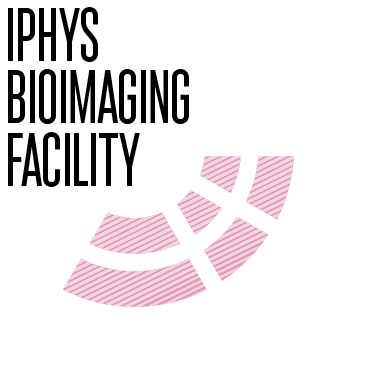Fluorescence lifetime microscopy (FLIM)#
Time correlated single photon counting (TCSPC) detects single photons of a periodic light signal and determines the times of the photons after the excitation pulses.
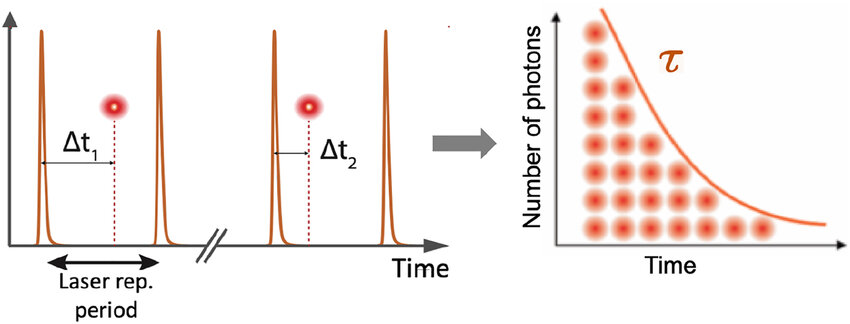
FLIM theory#
Fitting a model to the decay curve approach#
A fluorophore decays with time according to the relation:
where \(\tau_0\) is the fluorescence lifetime and \(A_0\) is the amplitude.
To model more complex kinetics of fluorophores, the decay is usually model by a sum of exponentials:
where \(\tau_0\) is the fluorescence lifetime and \(A_0\) is the amplitude.
The model fit can be done in specialized SW or by scripting.
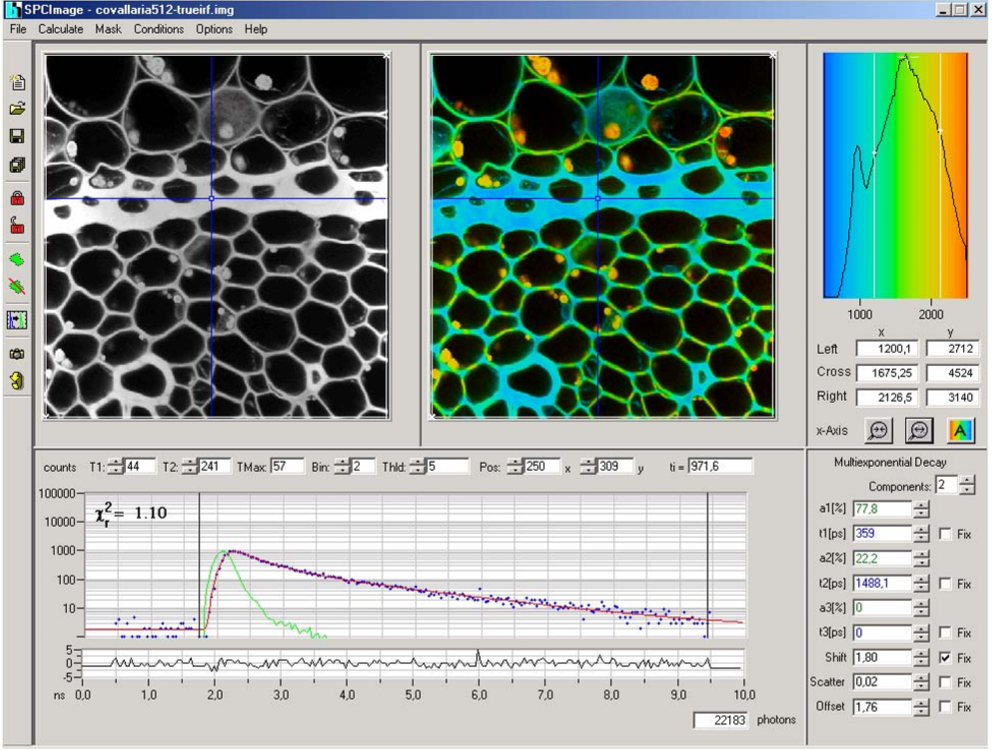
Phasor plot: the model-free approach#
Representation of the fluorescence lifetime using the phasor plot model-free aproach. The phasor is a graphical representation of the transformed raw data.
The single decay component fluorophore sits on the universal circle and the position on the circle reflects the lifetime \(\tau_0\) in respect with the laser repetition rate \(\omega\).
The two phasors \(g\) and \(s\) are obtained through the transformation as:
The graphic represantation of the phasor is the universal semicircle with a point cloud of transformed decayes.
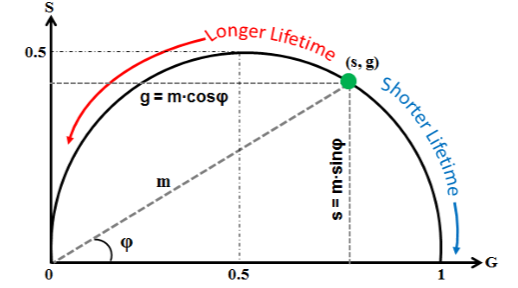
The complex micture of fluorescence specimen will be represented as a linear combination of those specimen in the universal semicircle.
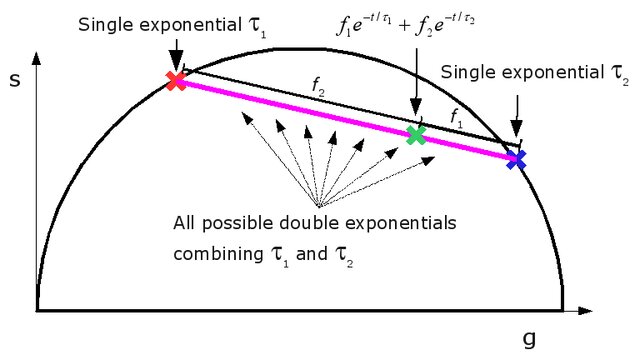
Code blocks for FLIM data phasor analysis#
The B&H FLIM data can be analysed in Python using multiple libraries such as numpy, sdtfile and others. The practical examples are on the next pages.
